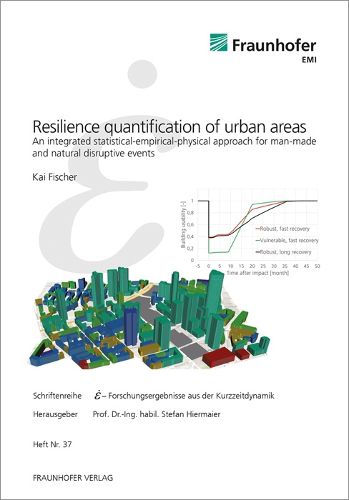Readings Newsletter
Become a Readings Member to make your shopping experience even easier.
Sign in or sign up for free!
You’re not far away from qualifying for FREE standard shipping within Australia
You’ve qualified for FREE standard shipping within Australia
The cart is loading…






This title is printed to order. This book may have been self-published. If so, we cannot guarantee the quality of the content. In the main most books will have gone through the editing process however some may not. We therefore suggest that you be aware of this before ordering this book. If in doubt check either the author or publisher’s details as we are unable to accept any returns unless they are faulty. Please contact us if you have any questions.
A growing urbanization, an increasing complexity of critical infrastructure and the formation of new threats are new challenges for urban areas and require a sustainable development and a stronger coping capacity with potential adverse events. Sustainability requires a strengthening of resilience.
Within this work, an integrated mathematical approach for the quantification of resilience is defined. This method allows a comprehensive evaluation of urban areas and the identification of weak spots. Statistical data are combined with physical models to assess the occurrence of multiple threats and their potential consequences. This risk based assessment is combined with time dependent recovery models to result in a quantity for resilience. Results of this framework can be applied to evaluate the effectiveness of single resilience phases, like prepare, prevent, protect, response and recover.
Besides the mathematical formulation, application examples in this work assess exemplarily terroristic threats in urban surroundings with empirical information of historical events and engineering models to assess possible structural damage effects. The comparison of different urban footprints builds the basis for a resilient urban planning process.
$9.00 standard shipping within Australia
FREE standard shipping within Australia for orders over $100.00
Express & International shipping calculated at checkout
This title is printed to order. This book may have been self-published. If so, we cannot guarantee the quality of the content. In the main most books will have gone through the editing process however some may not. We therefore suggest that you be aware of this before ordering this book. If in doubt check either the author or publisher’s details as we are unable to accept any returns unless they are faulty. Please contact us if you have any questions.
A growing urbanization, an increasing complexity of critical infrastructure and the formation of new threats are new challenges for urban areas and require a sustainable development and a stronger coping capacity with potential adverse events. Sustainability requires a strengthening of resilience.
Within this work, an integrated mathematical approach for the quantification of resilience is defined. This method allows a comprehensive evaluation of urban areas and the identification of weak spots. Statistical data are combined with physical models to assess the occurrence of multiple threats and their potential consequences. This risk based assessment is combined with time dependent recovery models to result in a quantity for resilience. Results of this framework can be applied to evaluate the effectiveness of single resilience phases, like prepare, prevent, protect, response and recover.
Besides the mathematical formulation, application examples in this work assess exemplarily terroristic threats in urban surroundings with empirical information of historical events and engineering models to assess possible structural damage effects. The comparison of different urban footprints builds the basis for a resilient urban planning process.